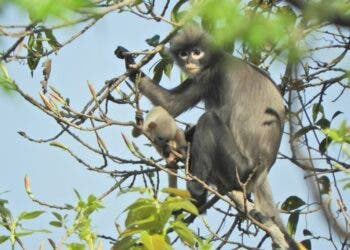Women’s faces are more attractive to men when they hit peak ovulation, past research showed. It’s not clear what the amplifying signals are. One suggestion was that women’s cheeks turn slightly red during ovulation, providing a subtle cue that enhance attractiveness. Using cameras specially designed to distinguish between subtle colour variations, researchers at University of Cambridge found that women’s faces show an increased redness. Peculiarly, this difference is so small that it’s not visually perceptible. Is the cue that subtle or can the enhanced attractiveness be attributed to some other factor or signal?

Dr Hannah Rowland and Dr Robert Burriss, one a zoologist, the other a psychologist, recruited undergrad female students and photographed them at the same time, each morning, for at least a month. The women’s faces, which didn’t had any makeup on, were photographed with a scientific camera typically used in the wild to discern camouflage. Then a computer program selected an identical cheek patch for each photograph.
Then researchers knew when each woman would ovulate since they screen for when the luteinising hormone surged in blood. This way, the researchers knew which photograph showed the woman at peak fertility. The team converted the imagery into red/green/blue (RGB) values to measure colour levels and changes. Indeed, the Cambridge researchers found redness varied across the ovulatory cycle, peaking at ovulation and remaining high during the later stages of the cycle after oestrogen levels have fallen. Once menstruation hit, the redness dipped.
However, when the photos showing the fertile women were ran through models of human visual perception, the average difference in redness was 0.6 units. A change of 2.2 units is needed to be detectable to the naked human eye.
“Women don’t advertise ovulation, but they do seem to leak information about it, as studies have shown they are seen as more attractive by men when ovulating,” said Dr Hannah Rowland, from the University of Cambridge’s Zoology Department, who led the study with Dr Robert Burriss, a psychologist from Northumbria University. “We had thought facial skin colour might be an outward signal for ovulation, as it is in other primates, but this study shows facial redness is not what men are picking up on – although it could be a small piece of a much larger puzzle,” she said.
It’s interesting that this happens in the first place, even though it doesn’t explain the previously reported enhanced attractiveness. Some primate species advertise ovulation, while the males only express sexual interest in females when they appear to be fertile. In humans, ovulation is less conspicuous and sexual behaviour is not restricted to the period of peak fertility. Seeing how women have this ‘ability’ can only mean that at some point cheek redness was visible, but this got tune down evolutionary over time. It may very well some antique adaptation from a common primate ancestor.
Primates, us humans included, really like red. Some women might augment face redness during ovulation by wearing red clothing or a blusher.
“As far back as the 1970s, scientists were speculating that involuntary signals of fertility such as skin colour changes might be replaced with voluntary signals, such as clothing and behaviour,” said Burriss. “Some species of primate advertise their fertility through changes in the colour of their faces. Even if humans once advertised ovulation in this way, it appears that we don’t anymore.”
Alright then, if facial redness doesn’t answer the question, what does? Well, there are other signals that might explain the enhanced attractiveness at ovulation. In may be that women have a greater propensity for blushing when around men they find attractive.
“Other research has shown that when women are in the fertile phase of their cycle they are more flirtatious and their pupils dilate more readily, but only when they are thinking about or interacting with attractive men,” said Burriss. “We will need to do more research to find out if skin redness changes in the same way”.
The research was published in the open-access journal PLOS ONE.






